Are Snowshoe Cats Hypoallergenic? (8 Tips for Allergic Families)
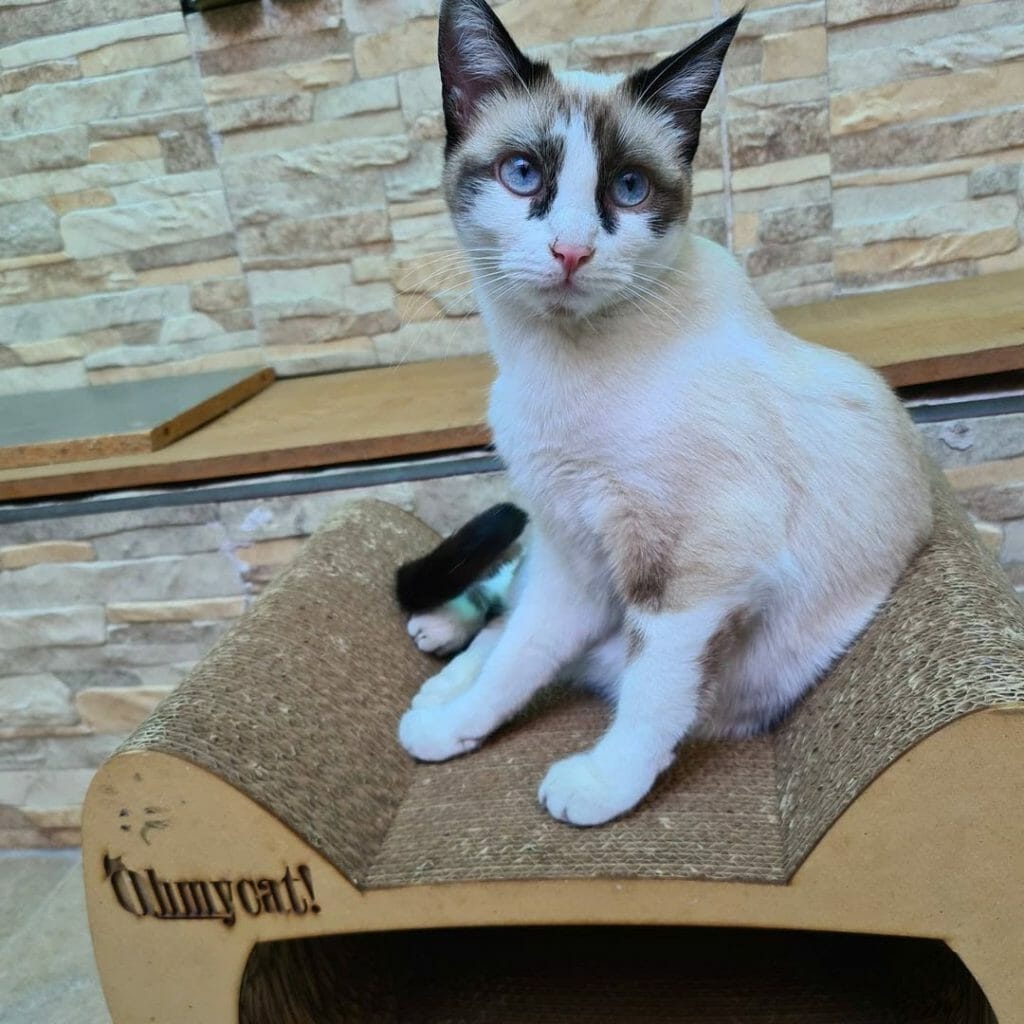

Unfortunately, no. There is no such thing as a fully hypoallergenic Snowshoe cat since all cat breeds produce a specific allergen that can trigger allergic reactions. This allergen is commonly sourced from the saliva, skin, and urine which are then dispersed in the air through the cat’s fur and dander.
If you are a big fan of felines and you find out that you are allergic to cats, this can be truly disheartening! Resorting to watching cat videos online will not suffice the urge to squeeze their cute chubby faces and tap their toe beans. If you are so determined to have a ball of fur with white toes running around the house, the big question is- is it possible?
Deciding over whether you get a Snowshoe or not despite you or even anyone in your family having allergic reactions to a cat requires extensive research. Before you contact your breeder, here is a guide first that will help you know whether it is best to get this amazing Snowshoe breed despite it not being hypoallergenic.
Table of Contents
Do Snowshoe Cats Shed a Lot?
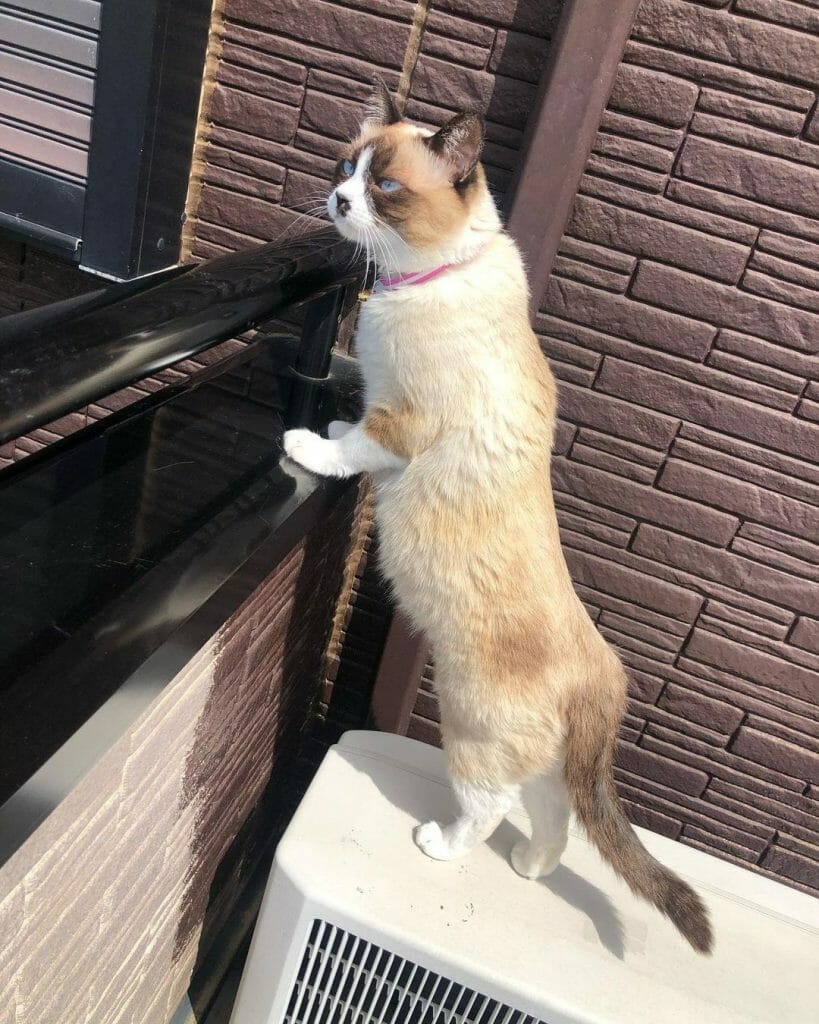

Not really. Snowshoes are moderate shedders due to their short fur. They also have little undercoats that cause them to just shed seasonally and they have very low amounts of loose hair. Despite that, proper nutrition and grooming are still needed to help control their shedding rate.
When Snowshoe cats start shedding, you might not notice that their hair is already sticking all over your furniture or clothes. It is best advised to vacuum the usual places your cat lays around in especially to avoid triggering cat allergy. Generally, cats shed all the time, but the amount varies. It is often during spring and fall when Snowshoe cats prepare their bodies for the shift in temperature. To minimize hair fall, brushing your cat regularly can help a lot.
How to Know if I Have a Cat Allergy?
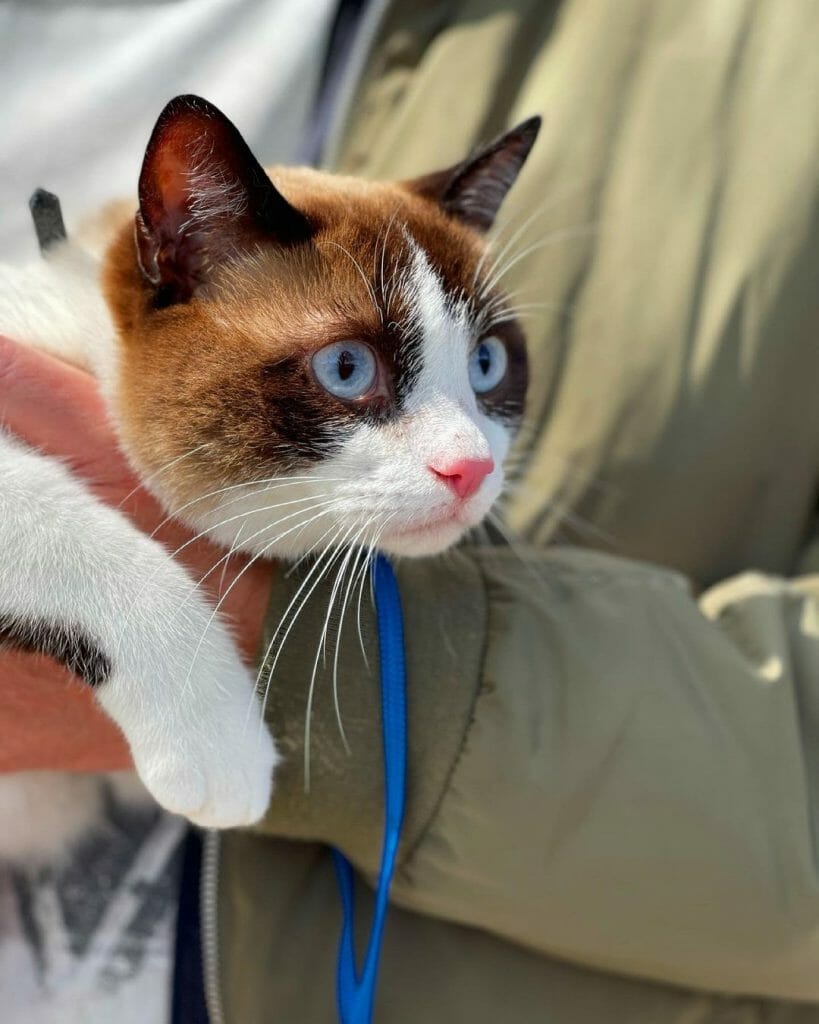

Going to your nearest allergist can help you identify if you are truly allergic to cats. There are several ways in which the test can be conducted. Should you decide to undergo one of the tests, it is important to disclose if you are taking any medication to avoid severe reactions during the process. I know, all these efforts just to have a Snowshoe cat, but this is worth a try!
Skin Prick Test
This is usually done in your doctor’s office. What happens is, your skin will be pricked with a tiny portion of allergen and leave it on for about 15 to 20 minutes. If your skin feels itchy and red, you have a cat allergy. The effects will normally subside after 30 minutes.
Intradermal Skin Test
This test is also performed by your doctor. The allergen will be injected on the arm or forearm and having a cat allergy will show red and itchy bumps. One advantage of taking this test is that this one is more sensitive in detecting allergies. The downside, however, is that it can show false results such as creating a reaction even if you aren’t allergic.
Blood test
If you have preexisting skin conditions or your age prohibits you from getting the other tests above, blood testing is a wiser option. This may take longer for the results to show, but one good thing is that this test won’t cause you any allergic reaction.
What Causes Cat Allergies?
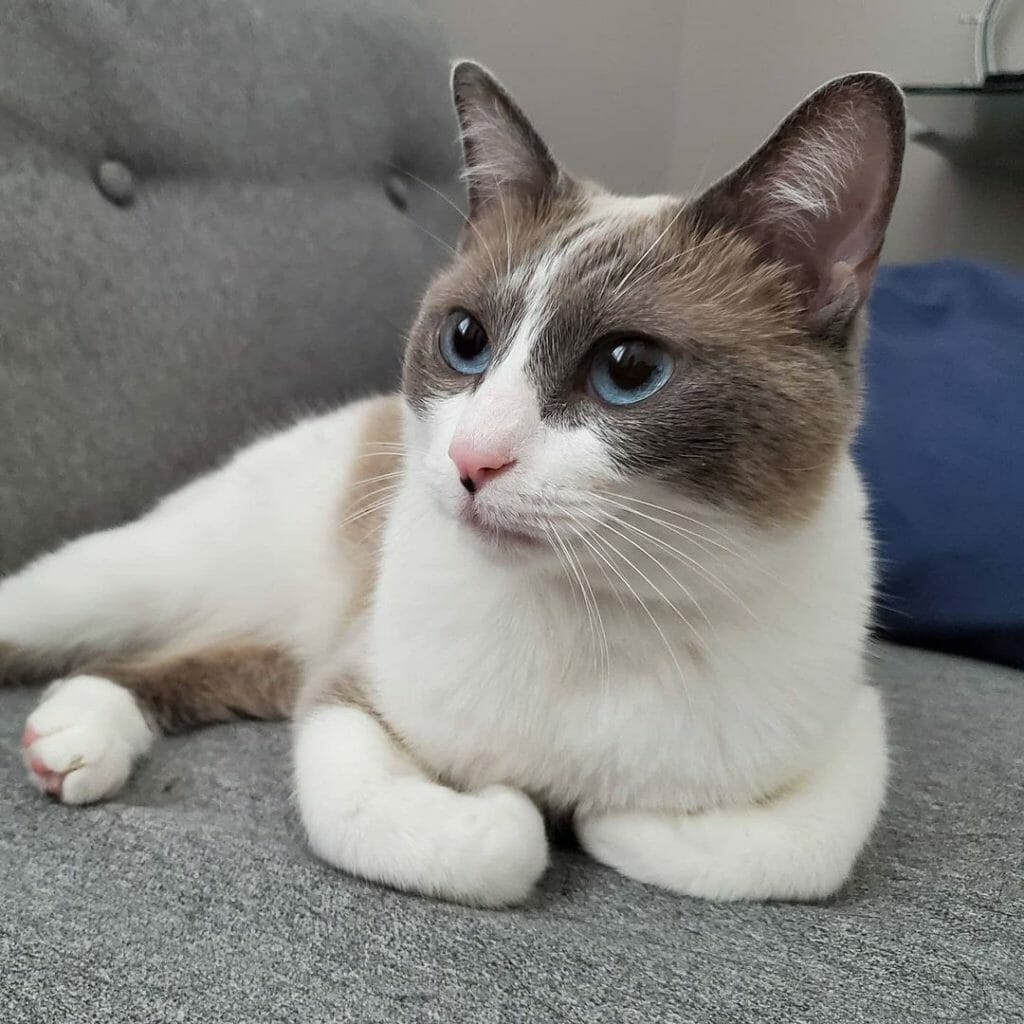

Cat allergy in itself, is not inborn, but rather, it is caused when the immune system mistakes allergens as harmful or toxic for the body. This is when you are genetically predisposed to have higher chances of developing allergies especially if some of your family members have it. When you get into contact or breathe in the dander (dead skin), fur, urine, or saliva of the Snowshoe, you will most likely experience mild to severe reactions within 30 minutes.
What Are the Cat Allergy Symptoms?
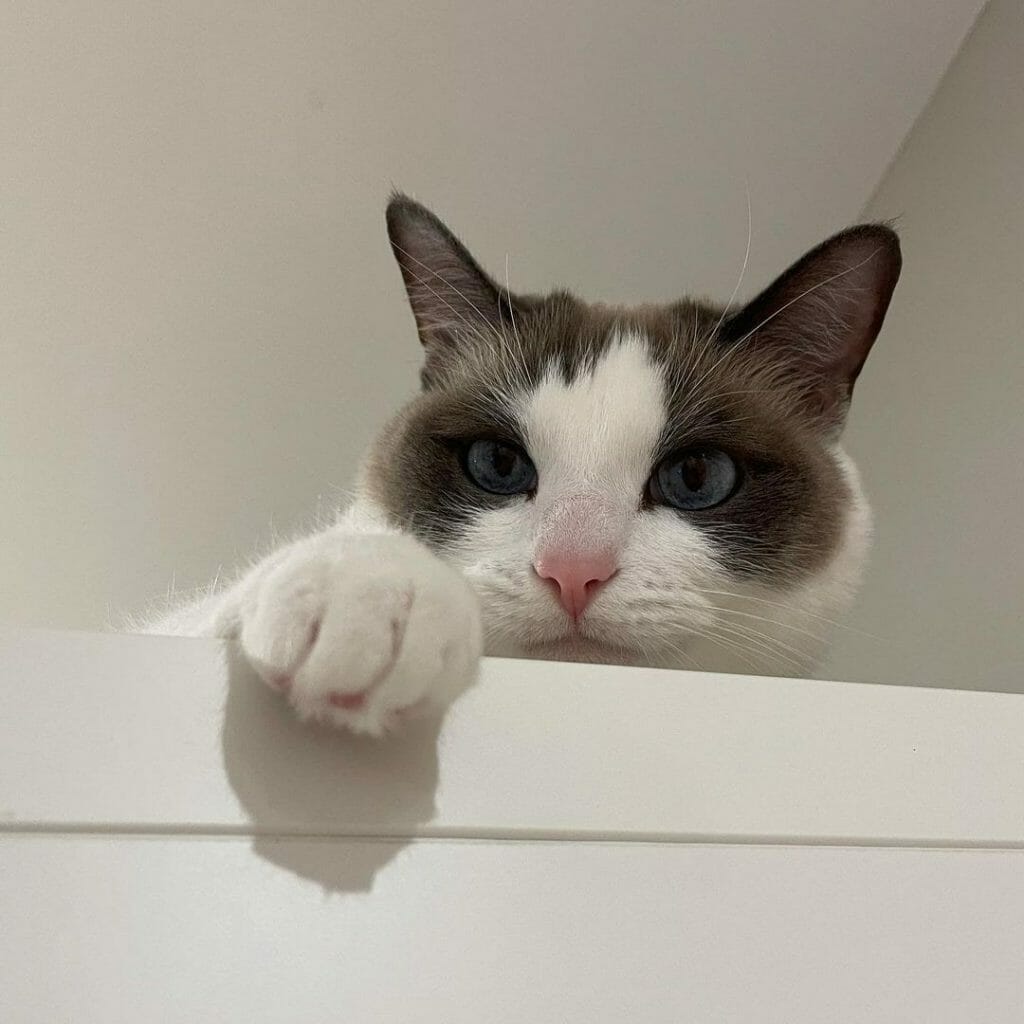

Once you have come in contact with a Snowshoe cat or any other cat breeds, the unpleasant effects of the symptoms may show in various forms. This can be annoying especially if they start manifesting early in the morning just right after you have cuddled with your family pet.
The symptoms may include:
- Nasal congestion and facial pain
- Runny and stuffy nose
- Chest tightness
- Sneezing
- Coughing
- Shortness of breath
- Wheezing
- Hives or skin rashes
- Red, itchy, and watery eyes
One thing to be aware of is that cat allergy will randomly show at one point in your life. This develops over time until it gives you some of the reactions listed above. The good news, however, is that your doctor can offer you different allergy treatments to prevent future discomfort after bonding with your chatty Snowshoe.
Can You Live With a Snowshoe Cat if You Are Allergic?
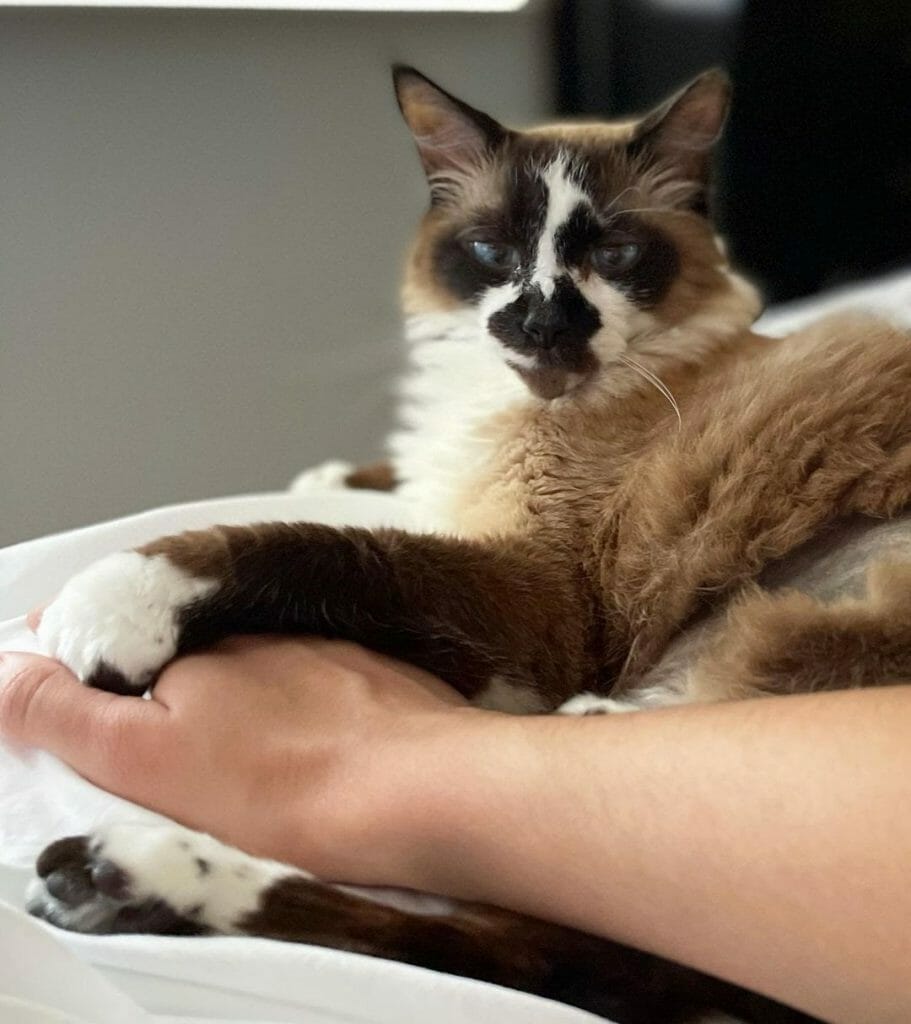

Absolutely! Several over-the-counter products can help alleviate the symptoms of your cat allergy so that means you don’t have to get separated from your Snowshoe feline or send her to shelter homes.
At least 30 percent of Americans are allergic to cats and dogs. Sadly, about 11 percent of cat owners end up rehoming their furry companion. This is emotionally taxing for both!
8 Tips for Family With Allergies
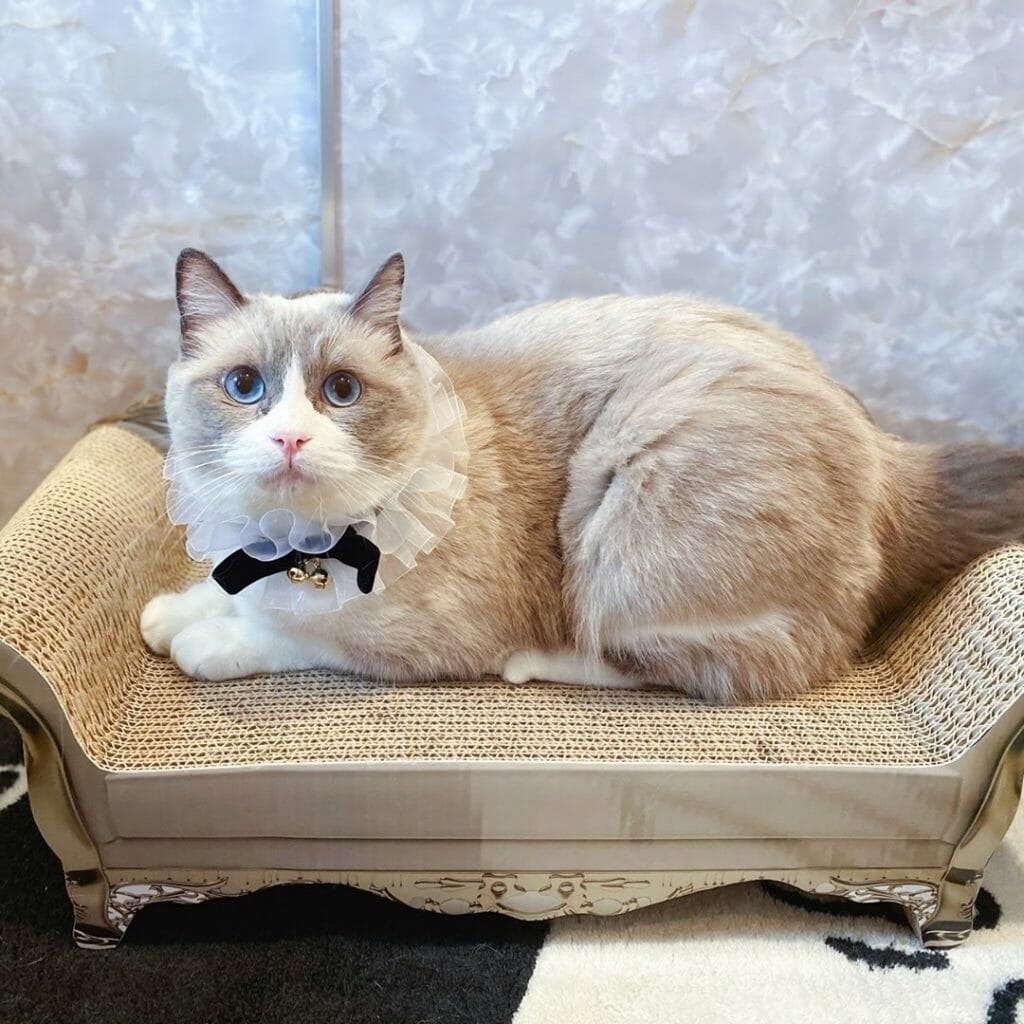

You might be wondering how the Snowshoe cat’s fur, urine, dead skin, and saliva can trigger cat allergy. These cat materials aren’t the cause of allergy but rather the medium by which the protein called Fel D1 allergen is dispersed in the air or stuck on bedsheets, rugs, clothes, and carpets. Since this is airborne, the moment the allergen is inhaled into the nose to the lungs, allergic symptoms will show.
Since rehoming your Snowshoe cat is the last option on the list, continuing to take care of your cute white-pawed pet won’t be that complicated. Although some of the family members are allergic, there are ways on how to improve the experience with your cat without putting anyone’s health at risk.
Here are the tips:
- Always consult your doctor for the right medication for your cat allergy. Although there are over-the-counter products that are readily available for your convenience, your allergist is the primary person who can prescribe you the most suitable allergy medicine.
- Do not pet, kiss, or hug your cat to avoid triggers. Every after handling your Snowshoe, make sure to wash your hands and arms.
- Strictly prohibit your Snowshoe feline from sleeping or laying around in your bedroom. This is where you might get most of the allergens because her fur will easily get stuck on your blankets and pillows.
- Bathe your Snowshoe at least twice per month to reduce the allergens she produces! To be safe, use protective gears such as gloves and a face mask during the entire bathing and grooming session. Make sure to change your clothes right after because there might be allergens sticking on you the entire time.
- Use a high-quality HEPA purifier and vacuum cleaner to get rid of the airborne particles that may cause cat allergy symptoms. Sprays are also common as a way to control dander and eliminate odors.
- Potty train your Snowshoe cat and enforce off-limit areas such as furniture which can easily catch out cat’s fur.
- Ensure that your home gets cleaned regularly.
- Replace your overstuffed furniture with leather. Changing your wall to wall carpet with wood or floor tiles will also help a great deal unless you can keep up with the regular vacuuming of your carpets.
The way you treat your cat allergy varies on how mild or severe it is. Consulting your doctor and asking for suggestions on how to deal with it without giving up your Snowshoe is best recommended. Usually, for nasal symptoms, Benadryl or steroid nasal sprays are used to treat them. For eye symptoms, antihistamine drops are great while inhaled corticosteroids aid asthma symptoms.
If you want a greater effective treatment, an allergy shot will help you build up a tolerance over time.
Male or Female Cat: Which Is More Allergenic?
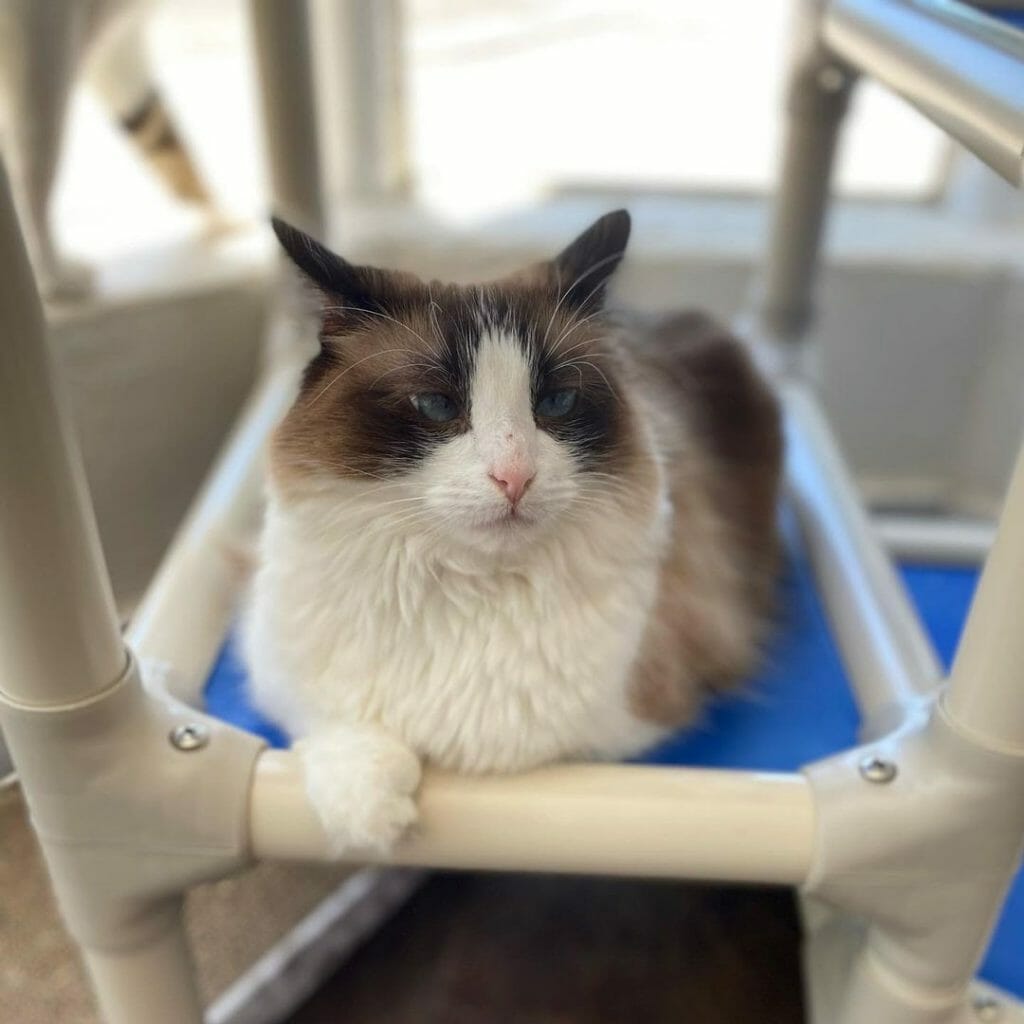

Luckily, aside from the possible ways that you can do to alleviate cat allergy symptoms, choosing the right gender of your cat can also lower your risk of having an itchy and red nose. Going for a female Snowshoe is the best choice for she produces a much lower amount of allergen compared to a male one. If the male Snowshoe is neutered, his allergen level will also decrease remarkably.
What’s more fascinating is that, in 2000, researchers have reported a high rate of cat allergy symptoms on owners who have dark-colored felines. Since the Snowshoe color ranges from cream to tan which are lighter colors, this is good news for cat lovers with allergies!
Conclusion


The gorgeous sight of having a Snowshoe cat breed inside your house can bring so much happiness to the family. Since no cat is 100 percent hypoallergenic, spending a short time with your targeted feline is recommended before bringing her home to your loving family. Most owners have shared that their Snowshoes didn’t trigger their cat allergies, so why not go for this less allergenic cat breed instead?
You may visit your nearest shelter home or contact a responsible Snowshoe cat breeder once you’re ready to have this fur-baby at your home!
